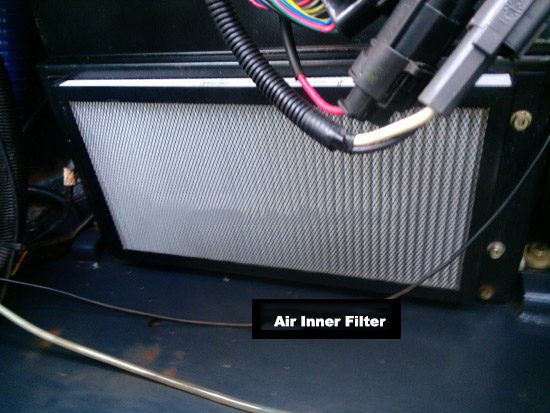The air conditioning system of the excavator is indispensable to the current engineering equipment. Because of the dusty and sandy working environment, you can only close the doors and windows and turn on the air conditioner or warm air during normal work. The heating system relies on a radiator connected to the engine antifreeze to achieve heating, which is different from the heating principle of household air conditioners
Components and Functions of the Air Conditioning System:
1. Compressor: compress the refrigerant from a low-pressure gaseous state to a high-pressure gaseous state;
2. Condenser: cool the high-pressure gaseous refrigerant from the compressor into a high-pressure liquid state;
3. Liquid storage Tank: also called drying tank, which is filled with desiccant to absorb water in the system and store refrigerant;
4. Expansion valve: atomize high-pressure liquid refrigerant to make it into low-pressure liquid state;
5: Evaporator: also called evaporation box , the refrigerant absorbs heat from a low-pressure liquid state to a gaseous state;
6. Blower: blows the cold air that has been absorbed by the evaporator into the ventilation duct.
The above is a simple schematic diagram of the refrigeration of the air-conditioning system.
The swash plate and the compressor main shaft are fixed together, the edge of the swash plate is assembled in the groove in the middle of the piston, and the piston groove and the edge of the swash plate are supported together by steel ball bearings.
When the main shaft rotates, the swash plate also rotates, and the edge of the swash plate pushes the piston to do axial reciprocating motion. If the swash plate rotates once, the front and rear pistons will complete a cycle of compression, exhaust and suction, which is equivalent to the action of two cylinders. Because the liquid is almost incompressible, the compressor must be fully gaseous.
If there is too much refrigerant, it may cause the refrigerant entering the compressor to exist in liquid state, which may damage the compressor.
The condenser is generally installed in front of the antifreeze radiator and below the turbocharger intercooler.
The liquid storage tank is generally located at the bottom left bottom of the condenser. There must be no water vapor in the air conditioning pipeline. Otherwise, ice blockage may easily occur at the liquid storage tank or expansion valve. Another function of the liquid storage tank is to preliminarily determine the refrigerant. Whether the volume is normal, there is a transparent observation window on the upper part of the liquid storage tank. When the engine speed is stable at 1200-1500 rpm, turn on the air conditioner switch to check the situation in the window.
The expansion valve is installed at the inlet and outlet of the evaporation box. It converts the high-pressure liquid refrigerant into a low-pressure liquid refrigerant. The refrigerant absorbs heat and cools down quickly. If there is water vapor in the system, ice blockage will occur at the expansion valve, resulting in the whole system being blocked and pressure. rise. The way to judge whether there is ice blockage is to pour it with hot water. If the pressure can return to normal, then the ice blockage has occurred.
The evaporator is located inside the integral blower assembly, and the blower controls the air door to select the air duct according to the buttons on the control panel to realize the control of the cold and warm air and the air outlet.
Tips:
When using the air conditioner:
You must pay attention to the need to select the internal circulation. The advantages of this are:

1. The indoor temperature will drop quickly;
2. Avoid external dust entering and mixing with the condensed water on the evaporator to block the evaporator.
When using the internal circulation:
Pay attention to the cleaning of the inner filter element of the air conditioner. The inner filter element is generally located in the lower left corner or the middle position behind the cab. The filter element can be washed with clean water but should not be exposed to the sun. It should be dried in a cool place.
At present, the blower assemblies for excavators are all integrated, which can control both the wind speed and the air outlet position.



















